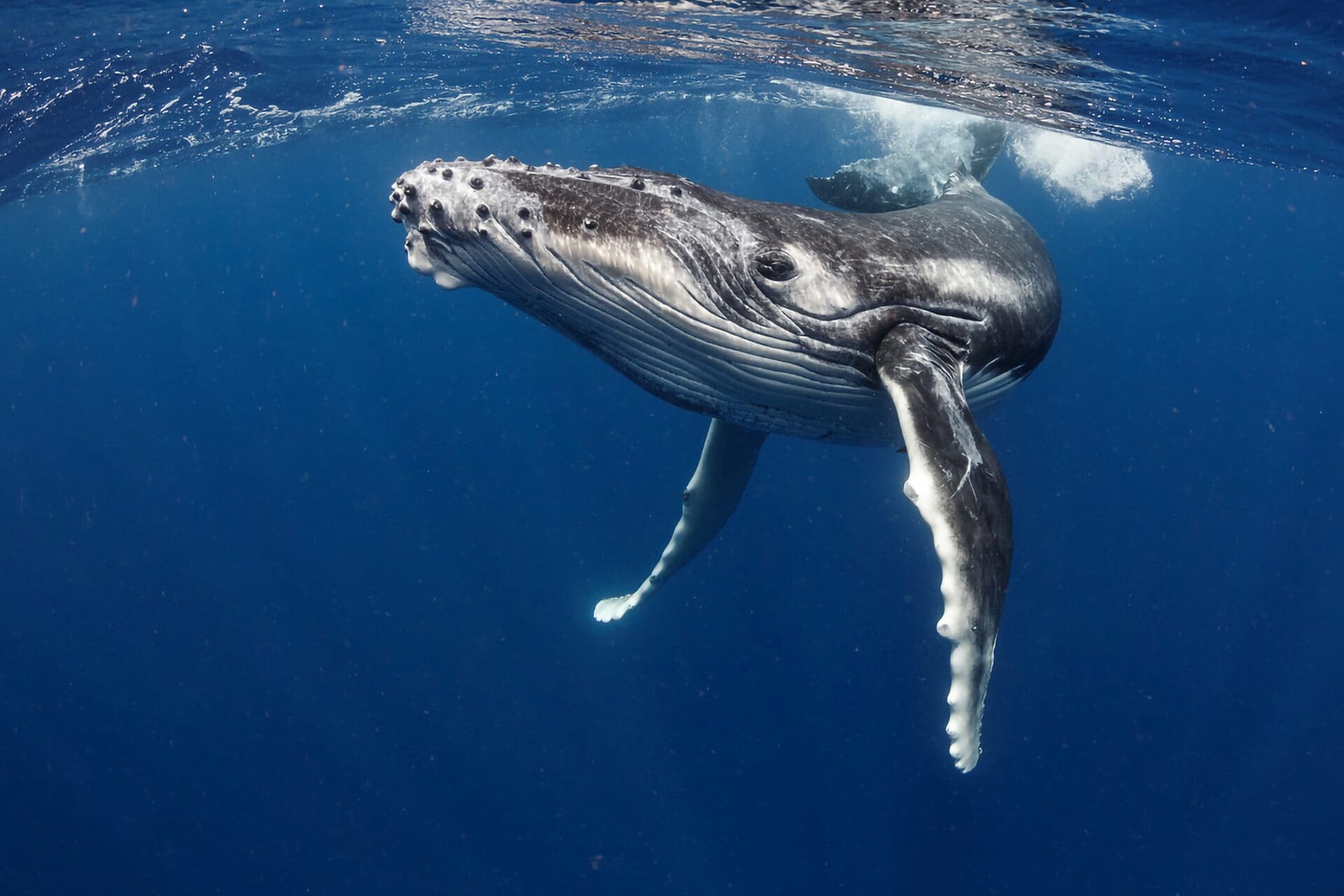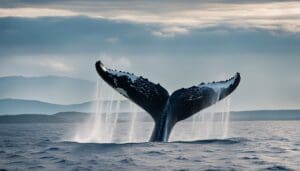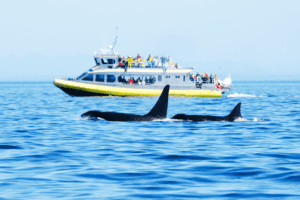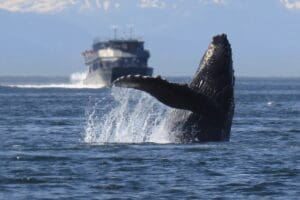Discovering the Magic of Whales: An Adventure for Everyone
Whale watching is an experience that transcends the mere act of observing wildlife. It’s a journey into the heart of the sea, a chance to witness the grandeur of nature in its most raw and beautiful form. As the whale breaches, leaping from the water before crashing back with a thunderous splash, you’re not just watching; you’re connecting with a world so different from our own yet intrinsically linked to the health and story of our planet.
This is more than an excursion; it’s an adventure, a moment of awe and wonder that stays with you long after you’ve returned to shore. It’s about the thrill of the chase, the peace of the open water, and the joy of sharing an unforgettable experience with others.
The Enchanting World of Whales
The Gentle Giants of the Sea
In the vast blue expanse of the ocean, whales reign as gentle giants, creatures of immense size yet remarkable grace. Imagine a creature so large that its heart is the size of a small car, and its tongue alone can weigh as much as an elephant. These are the whales – the largest animals ever to exist on our planet.
Despite their colossal size, they move through the ocean with a grace that belies their enormity, gliding silently through the deep waters.
Whales come in a variety of shapes and sizes, from the awe-inspiring blue whale, which can grow up to 100 feet long, to the more acrobatic humpback whales known for their spectacular breaches. Each species has its unique characteristics and behaviors, making the world of whales diverse and fascinating.
One of the most intriguing aspects of these marine mammals is their gentle nature. Despite their size, whales are known to be incredibly gentle and curious towards humans. They are the peaceful giants of the sea, often displaying behaviors that suggest a high level of intelligence and emotional complexity.
It’s not uncommon for whale watchers to witness these giants engaging in playful activities, such as breaching, tail slapping, and spy-hopping, where they peek above the water’s surface, seemingly as curious about us as we are about them.
The Songs of the Sea
The ocean is not a silent world, especially regarding the mysterious and enchanting songs of whales. Whale songs are one of nature’s most beautiful and complex forms of communication. Each whale species has its unique vocalizations, but the humpback whale is most famous for its melodious and haunting songs. These songs can last for hours, a symphony of moans, cries, and other vocalizations that can be heard miles away.
Scientists believe that these songs play a role in communication and mating behaviors, but much about them remains a mystery. What is known is that the songs are ever-evolving, with whales often changing their tunes from year to year. The ability of these magnificent creatures to create such intricate and varied melodies is a testament to their intelligence and social complexity.
Listening to the songs of whales is a mesmerizing experience that underscores the ocean’s profound beauty and mystery. These sounds, echoing through the vastness of the seas, remind us of the depth and complexity of life beneath the waves, a world that continues to fascinate and inspire.
Whales and Their Secret Lives
A Glimpse into Whale Behavior
Delving into the secret lives of whales opens up a world of wonder. These magnificent creatures exhibit a range of behaviors that are not only fascinating but also give us insights into their complex social structures. One of the most heartwarming aspects of whale behavior is how they care for their young. Mother whales, or cows, are incredibly nurturing, often seen guiding and protecting their calves with great tenderness. This maternal bond is strong, with calves staying close to their mothers for extended periods, learning the essential skills for survival in the vast ocean.
Whales are also highly social animals. They are often found in groups, known as pods, which can be like close-knit families. Within these groups, whales communicate with each other through a series of sounds and body language, indicating a level of social interaction and cooperation. This communication is vital, as it helps them coordinate hunting strategies, navigate the vast oceans, and maintain social bonds.
Playfulness is another endearing trait of whales. They often engage in playful activities, such as breaching (leaping out of the water), tail slapping, and spy-hopping. These behaviors are spectacular to witness and suggest that whales find joy and perhaps even a sense of fun in these actions.
Whales as Ocean Guardians
Whales play a crucial role in maintaining the health and biodiversity of our oceans, making them guardians of the marine ecosystem. One of the most significant contributions of whales to ocean health is their role in nutrient cycling. As they dive and surface, whales circulate nutrients throughout the water column. This process, known as the “whale pump,” helps stimulate the growth of phytoplankton, which forms the basis of the marine food chain and is a critical component in carbon sequestration.
Furthermore, even after their death, whales continue to support ocean life. When they sink to the seafloor, their bodies create complex ecosystems known as “whale falls.” These carcasses provide sustenance for various marine species, some of which are unique to these environments, thus supporting biodiversity in the deep sea.
Whales also play a significant role in mitigating climate change by maintaining the health of phytoplankton populations. Phytoplankton forms the foundation of marine food webs and absorbs vast amounts of CO2 from the atmosphere, much like trees and plants on land. Therefore, by supporting phytoplankton growth, whales indirectly help reduce atmospheric carbon, making them invaluable allies in the fight against global warming.
The Human-Whale Connection
Whales in Art and Mythology
The connection between humans and whales transcends the physical realm, venturing into the worlds of art, literature, and mythology, highlighting their profound cultural significance. Throughout history, whales have captivated the human imagination, inspiring awe and reverence. In many cultures, whales are considered sacred beings, symbols of wisdom, guardianship, and strength.
In mythology, whales have often been portrayed as powerful and mystical creatures. For instance, in many Indigenous cultures, whales are revered as totem animals and are believed to be ancestors or spirit guides. In Māori culture, the whale symbolizes protection, often depicted in carvings and stories as a guardian that escorts people to the afterlife.
In literature, perhaps the most famous example is Herman Melville’s “Moby Dick,” a tale that explores the complex relationship between humans and whales, portraying the whale as a majestic yet enigmatic creature. Whales have also been a subject in poetry and modern storytelling, often symbolizing the vast and mysterious nature of the sea and our deep connection to it.
Artists, too, have been drawn to the majesty of whales, depicting them in various forms, from intricate scrimshaw on whale teeth to grand, life-sized sculptures. These artistic representations celebrate the beauty and power of whales and remind us of our responsibility to protect these magnificent creatures and their habitats.
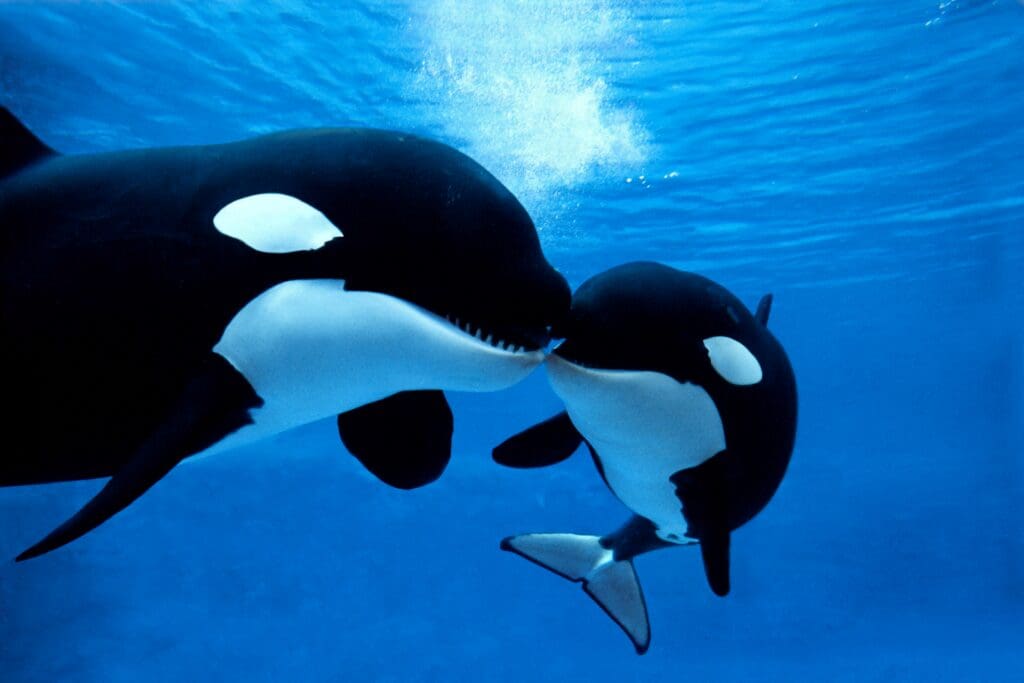

Personal Stories and Testimonials
The impact of whales on individuals is profound and often deeply personal. Many people who have experienced whale watching describe it as a life-changing event. There are countless stories of individuals who found peace, inspiration, or a renewed sense of wonder through their encounters with whales.
One such story is of a woman who found solace in watching whales amidst the turmoil of a personal tragedy. She described how the sight of a mother whale gently guiding her calf through the waters gave her peace and a reminder of the enduring bonds of love and family.
Another tale comes from a photographer who, after years of capturing images of whales, realized that these encounters had subtly shifted his perspective on life. He spoke of the humility and awe he felt in the presence of such immense yet gentle creatures and how it inspired him to advocate for ocean conservation.
This quote by Sylvia Earle reflects not only her deep understanding of marine life but also her appreciation for the intelligence and complexity of whales. Her words underscore the connection between humans and these majestic creatures, emphasizing the importance of understanding and protecting them.
An Unforgettable Experience
The Thrill of the Chase
There’s an indescribable thrill that comes with the pursuit of spotting a whale in the wild. It begins with the journey out to sea, where the vast expanse of the ocean stretches to the horizon, a canvas of endless possibilities. The air is filled with anticipation, each passenger scanning the water’s surface for a telltale sign.
And then, the moment arrives – a spout of water, a flash of a tail, a majestic leap. The excitement is palpable; hearts race as the boat gently maneuvers for a closer view. This is nature’s grand spectacle, unscripted and awe-inspiring. Each encounter is unique, leaving a lasting impression of these magnificent creatures’ raw beauty and power.
Photography and Whale Watching
Capturing the perfect moment with whales requires patience, skill, and a bit of luck. For photography enthusiasts, whale watching offers a challenging yet rewarding opportunity. Here are some tips to keep in mind:
- Use the Right Equipment: A camera with a good zoom lens is essential, as whales can be unpredictable and often surface at a distance.
- Be Patient and Ready: Whales can surface unexpectedly. Always have your camera ready, and be patient for the perfect shot.
- Focus on Lighting: Early morning or late afternoon provides the best natural lighting for photography.
- Respect the Whales: Remember to maintain a respectful distance to avoid disturbing these gentle giants.
- Capture the Environment: Sometimes, the most stunning photos include the surrounding seascape or the whale’s interaction with its environment.
Capturing Whale Wonders for Instagram
In the age of Instagram, capturing the perfect whale photo can turn an extraordinary experience into a shareable, viral moment. Whale watching provides an unparalleled opportunity for amateur and professional photographers to capture nature’s grandeur and share it with the world. Here are some tips for snapping that Instagram-worthy whale photo:
- Understand Your Subject: Knowing whale behavior can help you anticipate their next move. Whales often follow predictable patterns when surfacing or breaching, so understanding these can help you be ready at the right moment.
- Perfect Timing: The key to a great whale photo is timing. Be patient and keep your camera ready. Continuous shooting mode can be your best friend in capturing that split-second moment of a breach or tail slap.
- Composition Matters: While the whale is your focal point, pay attention to the composition of your shot. The surrounding seascape, the play of light on the water, and the whale’s position can all contribute to a stunning photo.
- Embrace Different Weather Conditions: Overcast days can provide a soft, even light that’s perfect for photography, while the golden hours of sunrise and sunset offer a warm, magical glow.
- Tell a Story: Try to capture photos that tell a story about the whale or your experience. A shot of a whale with a backdrop of mountains or alongside other marine life can add context and depth to your photo.
- Editing for Impact: Use photo editing apps to enhance your images. Adjusting the brightness, contrast, and saturation can make your photos pop. Remember, the goal is to enhance the natural beauty, not overpower it.
- Hashtags and Captions: When posting on Instagram, use relevant hashtags (#whalewatching, #oceanlife, #naturephotography) to reach a wider audience. A compelling caption that shares a fact about the whale or your personal experience can engage your followers.
- Respect Wildlife Guidelines: Always prioritize the whale’s well-being. Use a zoom lens to keep a safe distance and avoid disturbing these majestic creatures.
By following these tips, you can capture breathtaking whale photos that garner likes on Instagram and raise awareness about the beauty and importance of these magnificent creatures. It’s a way to share your awe-inspiring experience with others and inspire them to appreciate and protect our ocean life.
A Perfect Day Out at Sea
A day spent whale watching is about more than just the whales; it’s about the entire experience of being at sea. Picture this: the gentle rocking of the boat, the salty sea breeze, the endless blue sky meeting the ocean at the horizon.
It’s a day filled with peaceful moments, watching seabirds glide overhead and feeling the sun warm your skin. The excitement of whale sightings is interspersed with periods of serene calm, where the ocean’s vastness reminds you of nature’s simplicity and beauty.
It’s a place where time seems to stand still, allowing you to disconnect from the hustle of daily life and reconnect with the natural world. As the boat heads back to shore, with the setting sun painting the sky in hues of orange and pink, you carry with you the memories of an unforgettable day, a reminder of the wonders that lie in the depths of the sea.
Conclusion
As we reach the end of our journey through the enchanting world of whales, it’s clear that whale watching is an experience that truly offers something for everyone. Whether you seek adventure, a moment of tranquility, a deep connection with nature, or simply the opportunity to witness the majesty of whales in their natural habitat, this activity transcends ordinary experiences. It’s a chance to be part of something larger than ourselves, to feel the pulse of the ocean, and to see firsthand the gentle giants that roam its depths.
We warmly invite you to give whale watching a try. Whether you’re a seasoned nature lover or someone who’s never thought about stepping onto a boat, we promise you an experience that’s not just unforgettable but also transformative. It’s an adventure that will leave you with stories to tell, photos to share, and memories that will last a lifetime.
Are you ready to embark on this incredible journey? We encourage you to book a whale-watching tour today. These experiences are perfect for couples seeking a romantic and unique getaway, families looking for an educational and exciting adventure, or individuals eager to try something new and exhilarating. Join us on the water and be part of an experience that will captivate your heart and enrich your understanding of the natural world. Don’t miss the chance to create your own unforgettable whale-watching story. Book your tour now and prepare to be amazed!
Additional Resources:
- International Whaling Commission (IWC): The IWC regulates whaling activities and promotes whale conservation. [1]
- Marine Protected Areas (MPAs): Establishing MPAs helps protect crucial whale feeding and breeding grounds. [2]

